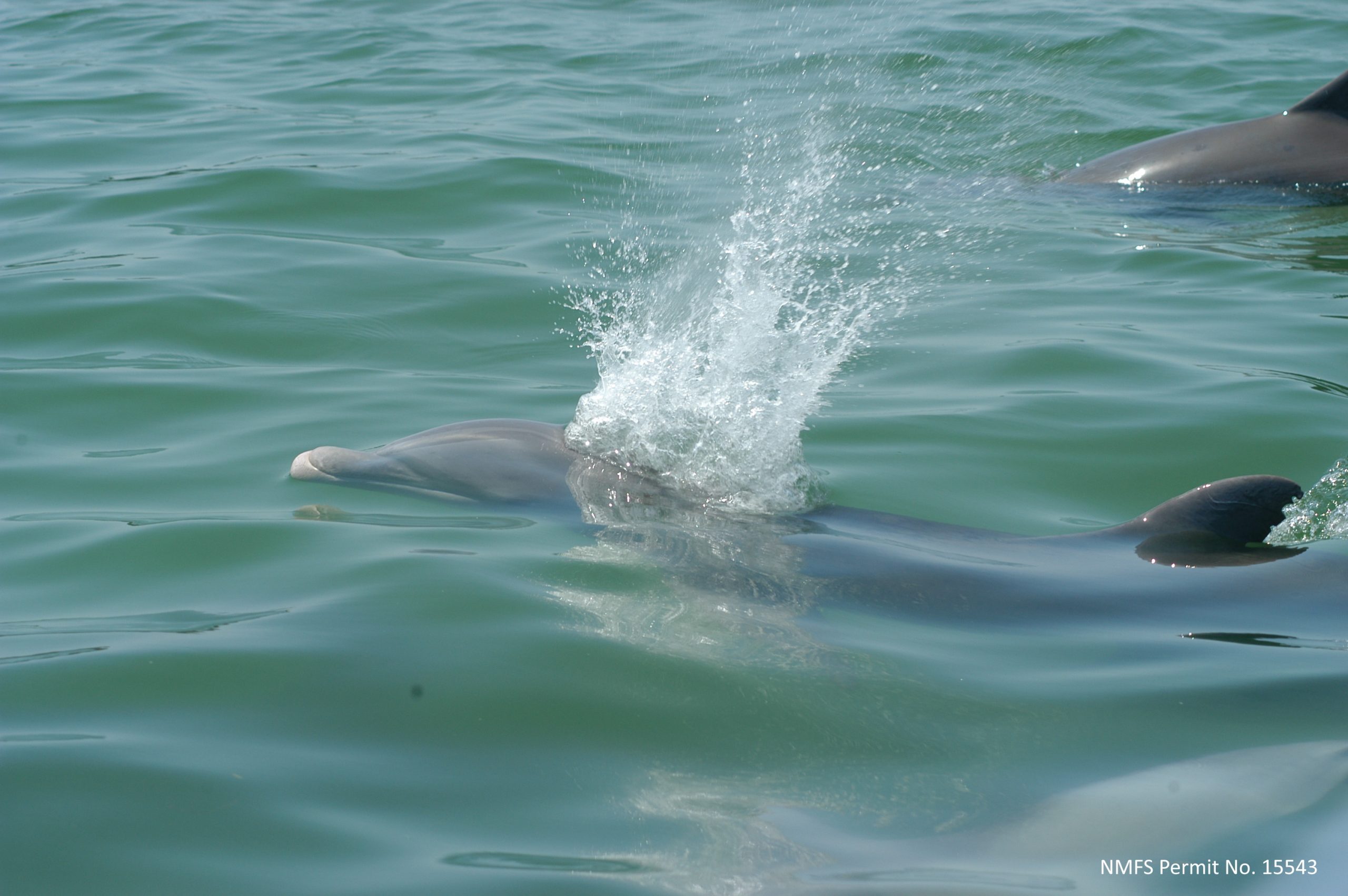Harmful Algal Blooms Causing Dolphins to Chuff
Coughing, wheezing, congestion, sore throat. Some of the common symptoms affecting humans as the result of harmful algal blooms, such as red tide.
New research is showing the blooms are causing similar symptoms in another species: the bottlenose dolphin.
A study led by Florida Tech ocean engineering and marine sciences assistant professor Spencer Fire discovered the rate of “chuffing”, an explosive type of exhalation, was significantly greater in dolphins observed during the areas where blooms were present. Fire and his team propose the chuffing is similar to symptoms of respiratory irritation observed in humans exposed to such red tide events. The research was published in this month’s edition of the open access journal Heliyon.
The study investigated whether bottlenose dolphin behavior in Sarasota Bay was influenced by the presence of severe red tide events, such as the armful marine alga, Karenia brevis (K. brevis). Factoring in the amount of K. brevis in the study area, the team observed the dolphins’ free-ranging respiratory behavior, movement patterns and activity budgets- how much time an animal spends in various activities such as eating, resting, sleeping, and moving. Fire also compared behavior from dolphins observed during a 2005 K. brevis bloom to those observed during inter-bloom conditions where K. brevis was present at background concentrations.
While the chuffing was observed, Fire and his team did not observe an apparent effect on respiratory rate, heading change rate or activity budgets. However, as the frequency and severity of harmful algal blooms increases, these reactions may have large-scale chronic impacts to the health and fitness of bottlenose dolphins in regions where blooms are common.
During the research, Fire noted that the original thought was that the dolphins would avoid the red tide due to the irritation. However, the dolphins continued to go to their usual areas, which could have future impacts. Future testing will look at if their patterns change due to the prevalence of blooms in the area.
“If they are avoiding areas of their normal habitat because of red tide, that will have negative impact, but if they’re not, that also means they’re exposed to higher amounts of the toxin,” Fire said. “If they’re not responding to something, that an indication they’re not aware of it.”
Fire is involved in a number of future research initiatives such as looking at overall marine animal health during a red tide event, in comparison with data when red tide is not present. He will also be involved in a study taking blubber samples of animals in red tide areas and analyze stress hormones to see if there is a difference compared to animals in bloom-free waters.
Red tide has greater effects than just dolphins chuffing, as it is responsible for fish kills, which in turn affect other wildlife in the area. The research being done by Fire and others is the beginning of understanding the entire scope of harmful algal blooms and their effect.
“I think once we start getting involved in what we see with these larger animals, it will tell us more about the whole ecosystem,” he said.
###





